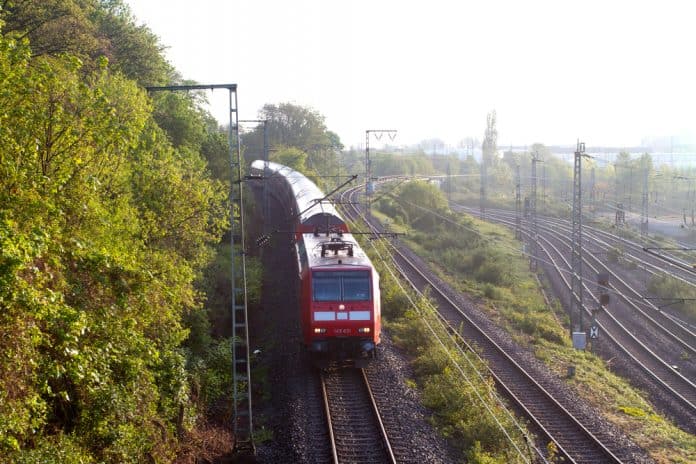
The Department of Transportation (DOTr) has awarded the three remaining civil works contracts worth more than $1.7 billion for the construction of the Malolos-Clark segment of the North-South Commuter Railway (NSCR), as reported by Manila Standard.
The joint venture of Hyundai Engineering & Construction Co. Ltd., Dong-ah Geological Engineering Co. Ltd., and Megawide Construction Corp. secured the first contract, which covers the construction of about 17 kilometers of elevated rail viaduct, seven bridges, and two railway stations.
Meanwhile, the second contract landed on Spain’s Acciona Construction Philippines Inc. and Daelim Industrial Co. Ltd. They will be responsible for the viaducts running 16 kilometers, and one railway station.
Italian-Thai Development Public Company Ltd. won the third contract, which includes civil works for the 12 kilometers of viaducts and two railway stations.
Earlier Awarding of Contracts
In August, the DOTr signed the first two contracts for the NSCR project worth $728 million, as reported by Railway Technology.
Acciona Construction Philippines and EEI Corporation joint venture obtained the first contract, which includes the construction of the main railway lines stretching 6.3 kilometers and the depot access line running 1.6 kilometers. They will also supervise the building of the underground railway station at the Clark International Airport.
Meanwhile, the second contract landed on POSCO Engineering and Construction, which will handle the construction of a 33-hectare Clark Railway depot and railway operations control center in Mabalacat.
More Efficient Transportation
The Malolos-Clark Railway runs 53 kilometers linking Malolos to the Clark economic zone and Clark International Airport, Railway Technology mentioned. It will have a total of seven elevated stations equipped with elevators and escalators and automatic fare control systems.
As mentioned, this transportation system is part of the 163 kilometer-long North-South Commuter Railway, which also features NSCR North 1, connecting Tutuban and Malolos; and NSCR South, linking Solis, Manila and Calamba.
Expected to improve transportation experience of passengers, the Malolos-Clark Railway will reduce travel time between Clark and Manila from the current two to three hours to about 35 minutes given the maximum rail speed of 160 kilometers per hour. It will lower greenhouse gas emissions by more than 60,000 tons annually.
The DOTr hopes to start the construction before the year ends, projecting the creation of about 24,000 local construction jobs in the next three years. Once finished by 2025, the railway will accommodate 350,000 passengers daily and employ 1,400 professionals.
Increasing economic activity in Clark and other regional centers, the Malolos-Clark Railway can offer benefits to local businesses.
Highly Connected Luzon
Similar to Central Luzon, developments are in full swing in the northern and southern parts of the region. The final segment of the Tarlac-Pangasinan-La Union Expressway (TPLEx) underwent final inspection last September, according to Sunstar. The 89-kilometer expressway cuts the travel time between Quezon City and Baguio City from six to three hours.
Meanwhile, the PNR South Long Haul, another big-ticket project, will be ready for implementation next year, as mentioned in this Business Mirror report. The railway will service Laguna, Batangas, Quezon, and Bicol.
Metro Rail Transit-4 or MRT-4, which will connect Metro Manila to the province of Rizal, will start construction next year, according to an earlier report from CNN Philippines.
Move Towards Provincial Cities
The government’s push to build more infrastructure outside the capital region is expected to stimulate economic growth in such areas. This has a significant impact on the real estate industry. In the Lamudi Roundtable Discussion held last September, thought leaders agreed that there’s a movement among aspiring homeowners and expanding enterprises towards urban centers outside Metro Manila.
Joey Bondoc, Senior Research Manager of Colliers International Philippines, identified Pampanga as one of the regions businesses are flocking to.
In an internal report, Lamudi found that cities in the Southern Luzon region have commanded greater interest as well. Provincial cities near Metro Manila registered an increase in page views and leads in the first six months of 2020.
Aside from the boom in infrastructure projects, the factors influencing the popularity of the region include the proximity to the capital and modernity of developments. Some of the sought-after locations are Lipa in Batangas, Calamba and Sta. Rosa in Laguna, and General Trias in Cavite.
Rizal’s capital, Antipolo, has likewise garnered strong demand in terms of vacant land.
#realestateblogph | #realestateblogphpropertynews | #REBPH
Article and Photo originally posted by Lamudi last October 19, 2020.







More Stories
Vista Land Celebrates 50 Years with Sandiwa: An Event Honoring Leadership, Legacy, and the Filipino Dream of Homeownership
Vista Land Celebrates Love Month in Ilocos Region
Vista Land Bridges Cebuano Heritage and Progress with Valencia by Vista Estates